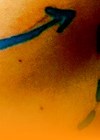As a speciality, we are constantly striving to achieve better results with less risk and down-time. It is not unusual for us to see patients who want to treat multiple skin concerns such as acne scarring, pigmentation, laxity and rhytids – all at the same time. These patients seek a treatment that is safe, with little down-time and requires minimal treatment sessions. The dilemma is: how do we achieve the most impact for the least amount of risk? A potential solution is utilising a combination approach of microneedling radiofrequency (microneedlingRF) and fractional CO2 laser.
Both microneedlingRF and fractional CO2 laser have seen considerable success in treating a variety of indications such as laxity, rhytids, scars, stretchmarks, pores and pigmentation [1,2]. In recent years, we are seeing that combination microneedlingRF and fractional CO2 laser treatment offers a safe and effective way of treating these multiple concerns while also minimising down-time [3-5]. SecretTM PRO is a new platform by Cutera that combines microneedlingRF with fractional CO2 laser. This article will describe how we use the Secret™ PRO in our practice.
Patient selection
The risk of post-inflammatory hyperpigmentation (PIH) in darker skin types means that this treatment is only suitable for skin types I-V. It is vital to assess the patient’s medical history, medication, allergies, lifestyle and skincare routine as this may impact on their suitability for treatment.
During the initial consultation, we elicit the patient’s key concerns and expectations. This enables us to plan an appropriate treatment protocol. For example, a patient whose main concern is laxity but who also has some sun damage and rhytids would benefit from two sessions of microneedlingRF, followed by a combination treatment of microneedlingRF with light fractional CO2; whereas a patient whose main concern is acne scarring and pores would benefit more from a combination treatment with, perhaps, more emphasis on the fractional CO2 laser.

Preparation
All patients have a patch test for the CO2 laser at least 10 days prior to treatment. We also recommend aciclovir 400mg TDS for five days prior and five days post treatment for most patients. For patients with skin types III-V, we offer 4% hydroquinone cream for two to six weeks prior to treatment in order to reduce the risk of PIH. Active acne must be treated prior to proceeding with SecretTM PRO.
Treatment
The skin is anaesthetised using topical anaesthetic cream such as LMX 4% or EMLA 5%. We apply clingfilm over the anaesthetic cream to prevent it from drying. The cream stays on for 20-30 minutes and is then removed in sections during the treatment. The skin is cleaned with Clinisept® solution.
We start with the microneedlingRF. We typically use a 64-pin semi-insulated cartridge for skin types I-III and a 24-pin semi-insulated cartridge for skin types IV and V. The table shows a standard treatment protocol.
We re-apply the anaesthetic cream to the treated area before moving on to the next section, ensuring adequate anaesthesia for the CO2 laser treatment. We place laser goggles on the patient and start the fractional CO2 laser treatment. We use a Zimmer Cryo 6 to blow cold air on the area of treatment to reduce the thermal trauma of the CO2 laser; this helps to minimise post-procedure swelling and risk of post-inflammatory hyperpigmentation. We also use a ViroVac® smoke extractor that extracts the fumes generated by this ablative treatment.
Typical laser settings would be 69mJ, 1.3mm density. We tend to do a single pass at the peripheries of the face but often do a double-pass across any scars, enlarged pores, anterior cheeks and glabella region.

Before and three months after one treatment of Secret™ PRO.
Aftercare
Post-treatment we apply a mineral sunscreen followed by liquid paraffin ointment. The patient takes an aftercare pack home which contains a simple gel cleansing wash, mineral sunscreen and liquid paraffin ointment, which they use for the next five days. We also provide them with a ‘rescue pot’ of Fucibet® cream which they can start using in case of early signs of infection such as worsening redness, pain or discharge. We arrange a telephone call for the following day and review appointments at one month and three months post treatment.
References
1. Tan MG, Jo CE, Chapas A, et al. Radiofrequency microneedling: a comprehensive and critical review. Dermatol Surg 2021;47(6):755-61.
2. Alexiades-Armenakas M, Sarnoff D, Gotkin R, Sadick N. Multi-center clinical study and review of fractional ablative CO2 laser resurfacing for the treatment of rhytides, photoaging, scars and striae. J Drugs Dermatol 2011;10(4):352-62.
3. Sobhi RM, Mohamed IS, El Sharkawy DA, El Wahab MAEFA. Comparative study between the efficacy of fractional micro-needle radiofrequency and fractional CO2 laser in the treatment of striae distensae. Lasers Med Sci 2019;34(7):1295-1304.
4. Kim J, Lee YI, Kim J, et al. Safety of combined fractional microneedle radiofrequency and CO2 as an early intervention for inflammatory acne and scarring treated with concomitant isotretinoin. Dermatol Surg 2020;46(10):e71-e7.
5. Tatlıparmak A, Aksoy B, Shishehgarkhaneh LR, et al. Use of combined fractional carbon dioxide laser and fractional microneedle radiofrequency for the treatment of acne scars: A retrospective analysis of 1-month treatment outcome on scar severity and patient satisfaction. J Cosmet Dermatol 2020;19(1):115-21.
Declaration of competing interests: The authors are both Key Opinion Leaders for Cutera and receive fees for consulting from Cutera.
COMMENTS ARE WELCOME









